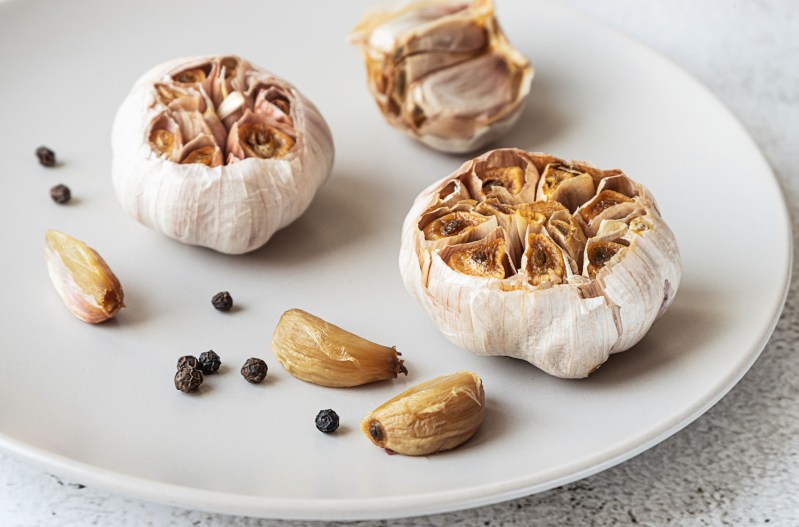There’s just something about garlic. Obviously, it’s delicious, but its adaptability is really something to behold. The ability it has to take dishes to new heights in both its raw and cooked form never fails to impress. Minced raw and tossed into a salsa, it’s pungent, spicy, and boisterous. When cooked, however, garlic becomes a whole new ingredient.
Its wild and bold notes tame to earthier, nuttier, more luscious flavors that just seem to melt into whatever you happen to be cooking, adding beautiful flavor and complexity along the way. This little bulb can be cooked in any number of ways, but roasted is by far our favorite. If you’ve never roasted your own garlic at home, just know that you’ve been missing out big time. Even the scent of roasting garlic wafting and dancing through your house is enough reason to buy this papery little bulb in bulk.
So how do we make this magical little ingredient? It’s truly one of the easiest things you can do for your cooking that will have big-time delicious results.
To make your own roasted garlic at home, all you need are four ingredients: garlic, olive oil, salt, and pepper. Now, we’re willing to bet that you’ve already got these ingredients in your pantry, so there’s really no excuse not to make this as soon as you’re done reading this article. It’ll be the most scrumptious thing you do all day, so chop chop. But, not literally. To roast garlic, you’re going to want to keep the bulb whole.
Roasted garlic can be an incredible flavor boost to countless dishes. We love it on pizza and mixed in with pasta dishes. If you really want to impress with your mashed potatoes this Thanksgiving, stirring in a few roasted cloves will have everyone going back for seconds.
You can also use roasted garlic to replace raw garlic in most recipes, if the raw taste of garlic is too bold for your palette. It’s wonderful in pestos, salad dressings, guacamole, or even completely alone, spread on toast.
After your garlic has roasted, if you’ve managed not to spread it all on an entire baguette and eaten it completely by yourself (good luck), it’s best to store the cloves in an airtight container in the refrigerator for up to two weeks.
Roasted garlic recipe

Once your whole garlic head has roasted, the individual bulbs should slip out of the papery skin quite easily. Be sure to remove all of the skin before eating and storing your roasted garlic.
Ingredients:
- 1 whole garlic bulb
- 1 teaspoon olive oil
- Salt and pepper
Method:
-
Preheat the oven to 350F.
- Using a sharp knife, slice the top ¼ inch off the top of the garlic bulb.
- Place the garlic cut-side up on a piece of foil, drizzle with olive oil, and season with salt and pepper. Bring foil sides up around the entire bulb, covering the garlic completely.
-
Bake 45 minutes – 1 hour, until the cloves are soft and golden brown.



